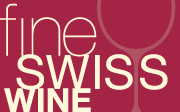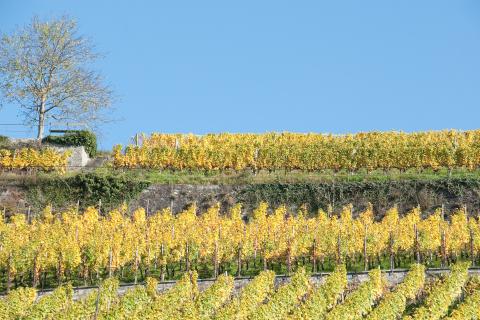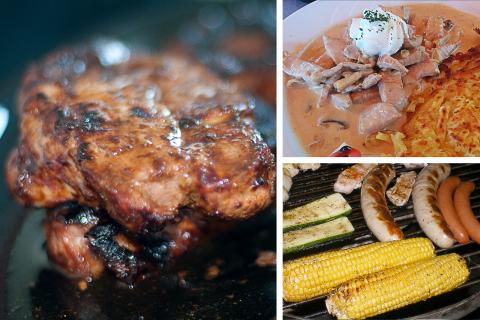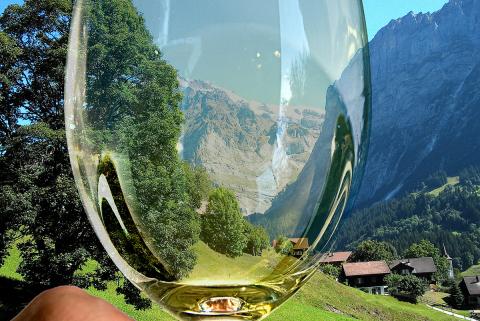An early English term for what is now called Sherry.
S
A large bottle holding nine liters, the equivalent of 12 regular wine bottles.
A tart punch made from red wine along with orange, lemon, and apricot juice with added sugar.
Schiller wine is a Rotling made by mixing white and red grapes in the must. The grapes have to be harvested from the same parcel in the vineyard and must meet the minimum Swiss QbA (Qualitätswein bestimmter Anbaugebiete) of the specified region to be marketed as a Schiller wine. Because of the color, Shiller wine is often called a rosé, but that’s not strictly correct.
A Rosé is made exclusively with red wine grapes. Shiller wine produced in Graubünden tends to have higher proportions of red wine grape, while in Valais it’s reversed with white grapes, usually, Fendant (Chasselas), having a higher percentage. Shiller wine is also made in St. Gallen.
Grape variety grafted to the rootstock.
An alternative to cork for sealing wine bottles, comprising a metal cap that screws onto threads on the neck of a bottle. Also called a stelvin.
French for dry, except in the case of Champagne, where it means semi-sweet.
German for sparkling wine.
Wines made in the United States but named after places that the Alcohol and Tobacco Tax and Trade Bureau requires to be modified by a US name of geographic origin. Examples would be New York Chablis, Napa Valley Burgundy, or California Champagne.
Acid taste on the palate. Not necessarily unpleasant smoky flavor and aromatic complexity. Usually a by-product of fired (toasted) oak barrels.
A fortified wine that has been subjected to controlled oxidation to produce a distinctive flavor.
An essential part of red winemaking as it contains pigments, flavonoids, and tannins.
Continual and deliberate contact of the skins with the juice during the winemaking. This is generally to extract color or tannin from the skin.
Describes a wine with a mild tannin or acid sensation with no harshness on the palate or in the aftertaste.
A system of fractional blending used in making fortified wine. Usually, a stack of barrels will have the youngest wines at the top and the oldest at the bottom. Wine is removed from the bottom barrels for bottling and topped up from the row above. In this way, a consistent wine can be produced over many years. This process is used for Sherry.
A trained wine expert that often works in fine restaurants.
Used to kill yeasts and molds but can produce the undesirable odor of crushed geranium.
Effervescent wine containing significant levels of carbon dioxide.
German for late harvest wine.
A machine used to reduce the amount of alcohol in a wine.
A wine bottle that holds approximately 6 oz (175-187 mL) or one-fourth the equivalent of a typical 750 mL bottle; a single-serving.
Italian for sparkling. Generally, any sparkling wine from Italy, although producers of Franciacorta have stated that Franciacorta is not a spumante.
Processes used to stop the wine from deteriorating.
A brand of screwcap.
A wine that is not sparkling wine.
A production method of artificially mellowing wine by exposing it to heat.
Compounds (typically: potassium metabisulfite or sodium metabisulfite), which are added to wine to prevent oxidation and microbial spoilage.
Used since Roman times to preserve, disinfect and reduce oxidation in wines. It is referred to on food and wine labels as Preservative (220) added.
More than fruity; pertaining to the sugar level in the finished wine.
Defined by the level of residual sugar in the final liquid after the fermentation has ceased. However, how sweet the wine will actually taste is also controlled by factors such as the acidity and alcohol levels, the amount of tannin present, and whether the wine is sparkling.
An organization representing the economic interests of wine producers in Bordeaux.



